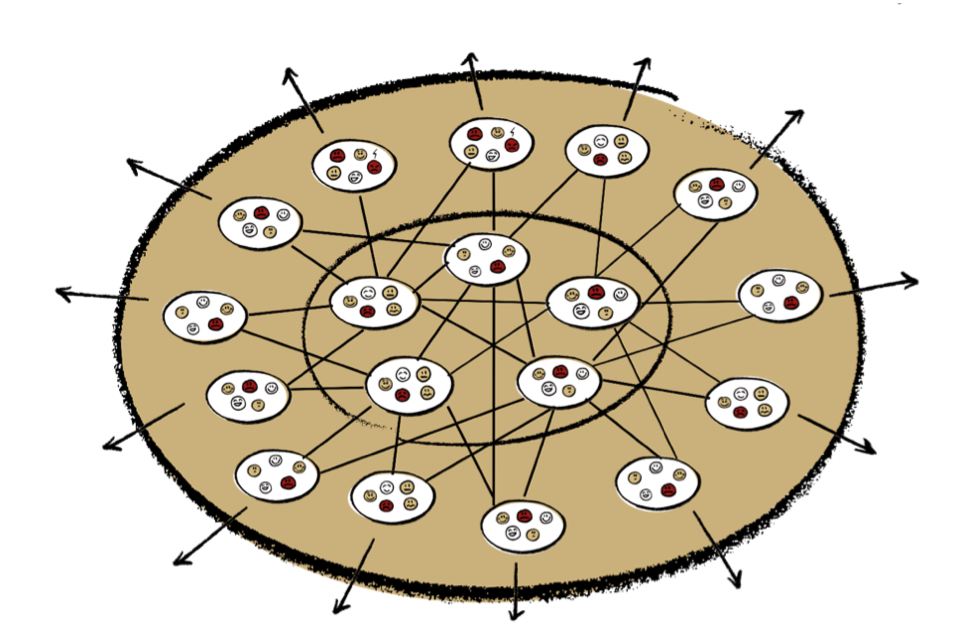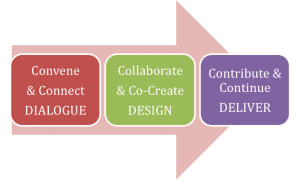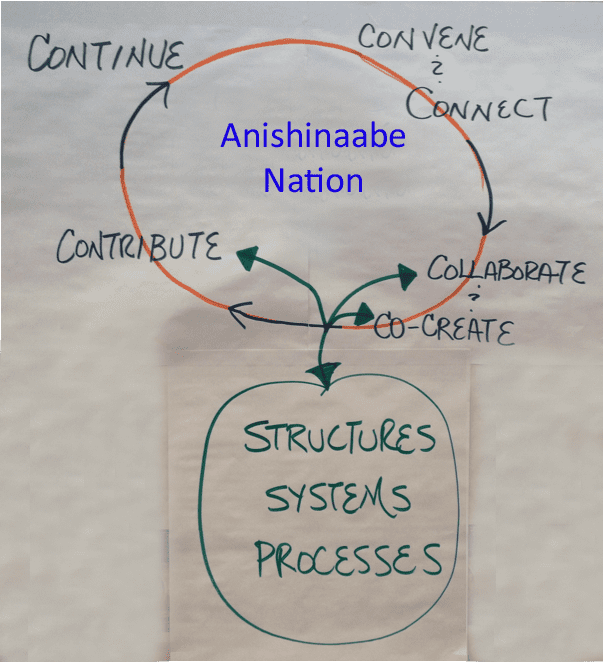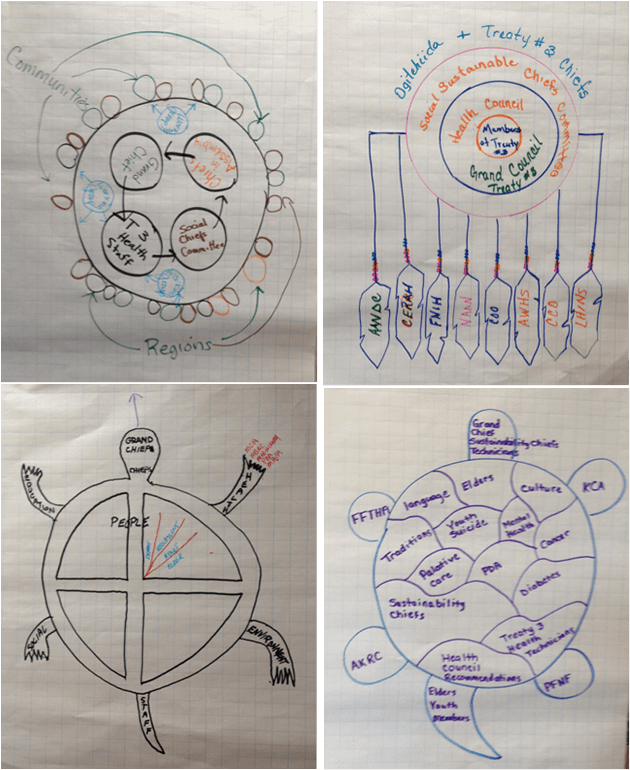Last week I spent two days designing with a First Nations council that represents 28 communities spread across 55,000 square miles. These grassroots representatives came together purposefully to agree on the strategies as well as design the structure, systems and processes necessary to operate as a healthy, humane, sustainable nation and organization. Their previous experience with strategic planning in 2011 left them with a plan but not the kind of action and continuance they had imagined.
This lack of ability to move from visioning and strategizing to implementation and continuance is a common result with many organizations whether they are for-profit, non-profit, non-government or public sector. Many strategic plans end up sitting on an organization’s shelf because a key component is not designed into the learning and growth experience. And yes, strategic planning and/or renewal is all about learning new ways and means for self-determination and self-sustainability.
Adopting new organizational strategies necessitates redesigning existing structures, systems and processes to support the new learning and growth. The learning requirement is significant for an organization as many of you have probably witnessed and experienced in your own work lives. Imagine doing the same across 28 communities with multiple organizations, which is not unlike creating change in a multi-national corporation (i.e., General Electric). The learning curve and subsequent change process become increasingly more complex when you purposefully consult and build consensus among 28 geographically dispersed communities. The goal is to gain high-level agreement on structure, systems and processes all the while leaving each of the communities to customize their coordination mechanisms to specifically suit their individual needs.
Consider the network of 18 teams illustrated below including which of them needs to talk to each other to adequately perform their work. Designing the necessary coordination mechanisms to make this happen can boggle the mind. Add to that the task of coordinating the interactions and relationships with clients and stakeholders existing outside the organization’s boundaries and you have defined large-scale, whole system design and development.

Source: adapted from Niels Pflaeging, Organize for Complexity, 2014.
Where does one begin when confronted with such complexity? I use the Collaborative Process Model below to help people understand their big picture and each other, which then enables them to articulate and agree on the challenges they are facing.
 From this shared understanding of purpose and mutual agreement on new strategic direction, they can collaboratively imagine and design solutions — an organization structure, social and technical systems and core work processes — needed to deliver on self-determination and self-sustainability.
From this shared understanding of purpose and mutual agreement on new strategic direction, they can collaboratively imagine and design solutions — an organization structure, social and technical systems and core work processes — needed to deliver on self-determination and self-sustainability.
To illustrate the redesign of an organization’s structure, below are four scenarios that emerged from the visioning exercise of the First Nations council.
One of the next steps for this First Nations group is to integrate their four governance scenarios into one cohesive structure incorporating the following parameters —
• Nationhood:
The people are at the heart of it
Collaboration within the nation
• Unity:
All have a voice at the table
Equal voice among all 28 communities
• Shared Leadership:
Whoever shows up are the right people
Cross-functional working groups for implementation
Consensual recommendations regarding governance, strategy, program and service delivery, and funding allocations
Another step on the First Nations journey toward self-determination and self-sustainability will be to reconvene in the near future for a third day of design. Social and technical systems will be designed to enhance such activities as two-way communication, advocacy and lobbying. Furthermore, core work processes will be designed to allow innovation, to eliminate errors and redundancies, and to transform the nation and organization along their chosen strategic pathway — their new beginning.
What new beginning is emerging in your life that will guide you closer to your own self-determination and self-sustainability?
For more on self-determination and self-sustainability, click here.






